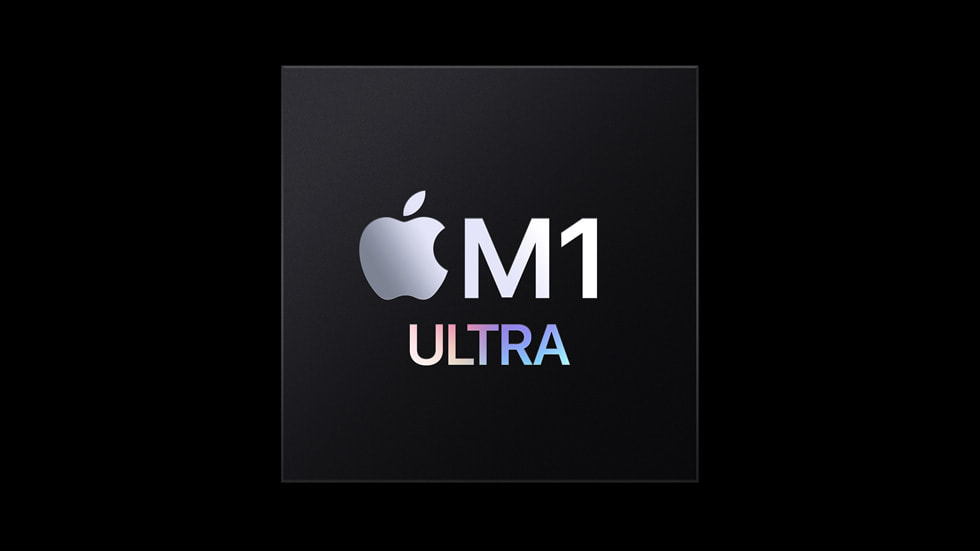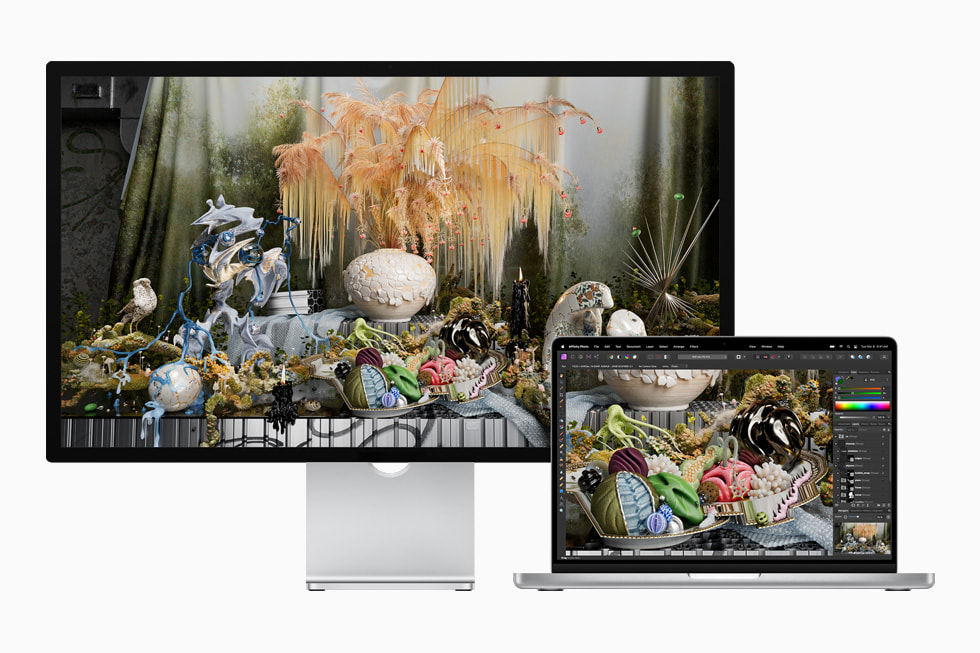Apple announced a whole ton of stuff during its March 8 event today and while there were refreshed versions of the iPhone SE and iPad Air announced, there were still brand new products as well. It’s time to welcome the Mac Studio and Studio Display as well as the new M1 Ultra chip that will power Apple’s very highest-end Macs.
Whether you’re looking to get yourself a new Mac or a display, here’s what you need to know.

Apple M1 Ultra

Apple announced the new M1 Ultra chip today, saying that it is essentially two interconnected M1 Max chips that creates a whole new offering in the Apple silicon lineup. The M1 Max was already a very capable chip and propelled the MacBook Pro to new heights when it was announced last week. Now, it’s being overshadowed by Apple’s next big thing.
Apple’s new M1 Max can be configured with up to 128GB of RAM and will feature a 20-core CPU, 64-core GPU, and 32-core Neural Engine for the ultimate in performance.
“M1 Ultra is another game-changer for Apple silicon that once again will shock the PC industry. By connecting two M1 Max die with our UltraFusion packaging architecture, we’re able to scale Apple silicon to unprecedented new heights,” said Johny Srouji, Apple’s senior vice president of Hardware Technologies. “With its powerful CPU, massive GPU, incredible Neural Engine, ProRes hardware acceleration, and huge amount of unified memory, M1 Ultra completes the M1 family as the world’s most powerful and capable chip for a personal computer.”
Buyers of machines with the M1 Ultra inside can expect speeds that are truly impressive, including memory bandwidth of 800GB/s.
The new chip will be used initially in the new Mac Studio, also announced during today’s event.
Mac Studio

The new Mac Studio will be the first machine to offer the M1 Ultra, although an M1 Max version will also be offered. The machine has a similar footprint to a Mac mini but is notably taller to make way for the extra cooling required. When specced with M1 Max, Apple says we can expect some mighty numbers in terms of performance — especially compared with the now-defunct 27-inch iMac.
- Up to 2.5x faster CPU performance than the fastest 27-inch iMac with 10-core processor.
- Up to 50 percent faster CPU performance than Mac Pro with a 16-core Xeon processor.
- Up to 3.4x faster graphics performance than the 27-inch iMac, and over 3x faster than Mac Pro with its most popular graphics card.
- Up to 7.5x faster than the 27-inch iMac, and up to 3.7x faster than 16-core Mac Pro when transcoding video.
When an M1 Ultra chip is used, things get even more insane and this is definitely the machine those with power-hungry workflows are going to want.
- Up to 3.8x faster CPU performance than the fastest 27-inch iMac with 10-core processor.
- Up to 90 percent faster CPU performance than Mac Pro with 16-core Xeon processor.
- Up to 60 percent faster CPU performance than 28-core Mac Pro.
- Up to 4.5x faster graphics performance than the 27-inch iMac, and up to 80 percent faster than the fastest Mac graphics card available today.
- Up to 12x faster than the 27-inch iMac, and up to 5.6x faster than 28-core Mac Pro when transcoding video.
Connectivity comes in the form of HDMI, Ethernet, two USB-A ports, and four Thunderbolt ports on the back. Around the front, a pair of USB-C ports and an SD card slot round things out.
The new Mac Studio starts at $1999 and goes up for order today. Orders will ship March 18.
Studio Display

The new Studio Display is a 27-inch 5K monitor that is tailor-made for the Mac Studio but can also be sued with Apple’s other machines. There will be a nano-texture option, and a stand is included in the box, unlike the Pro Display XDR.
That display will come with a 600-nit brightness spec as well as support for P3 wide color, too.
Studio Display features a 27-inch 5K Retina screen with over 14.7 million pixels. With 600 nits of brightness, P3 wide color, and support for over one billion colors, images come to life with spectacular detail. True Tone technology automatically adjusts the display’s color temperature as the environment changes for a more natural viewing experience. An industry-leading anti-reflective coating enables incredibly low reflectivity for better comfort and readability. And for workspaces with bright light sources, including sunlight, Studio Display offers an innovative nano-texture glass option. Nano-texture glass, first introduced on Pro Display XDR, scatters light to further minimize glare while delivering outstanding image quality.
The new Studio Display will sell from $1599 and it will be available next week. The nano texture option costs an additional fee, however.
You may also like to check out:
- Download Windows 11 Pro ISO File Without Product Key From Microsoft
- Force Download Windows 11 Free Upgrade Right Now, Here’s How [Tutorial]
- How To Install Windows 11 On A Mac Using Boot Camp Today
- Download Windows 11 Installation Assistant For Your PC
- How To Upgrade To Windows 11 From Windows 10 For Free
- How To Create Bootable Windows 11 USB Flash Drive [Guide]
- Download: iOS 15.3.1 IPSW Links, OTA Profile File Along With iPadOS 15.3.1 Released
- Jailbreak iOS 15.3.1 On iPhone And iPad [Status Update]
- How To Install macOS 12 Monterey Hackintosh On PC [Guide]
- Best iPhone 13, 13 Pro Tempered Glass Screen Protectors Available Today [List]
- Best iPhone 13, Pro Max 20W USB-C Chargers [List]
- Top iPhone 13 Pro Max Screen Protectors Available To Buy [List]
- Best iPhone 13 / Pro Cases For Protection Available Right Now
- How To Fix Bad iOS 15 Battery Life Drain [Guide]
- Apple Watch ECG App Hack: Enable Outside US In Unsupported Country On Series 5 & 4 Without Jailbreak
You can follow us on Twitter, or Instagram, and even like our Facebook page to keep yourself updated on all the latest from Microsoft, Google, Apple, and the Web

